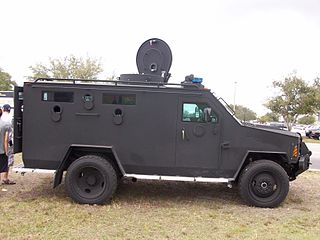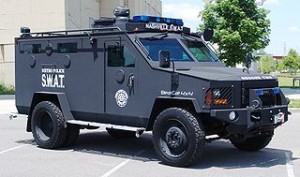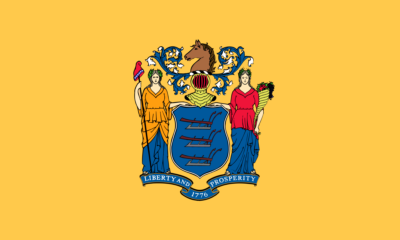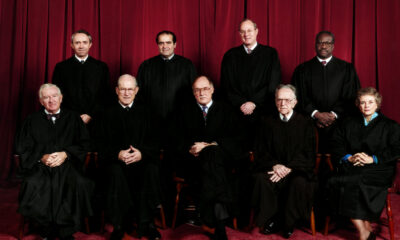Constitution
Militarized police go too far

The events of the last eight days in Ferguson, Missouri have called the country’s attention to a disturbing trend. America now has the most militarized police it has ever had. Like all ideas that threaten liberty, militarized police began innocently enough. But the public and the media are at least paying attention. So, one hopes, are enough Representatives and Senators
History of police
The concept of “police” dates back to ancient Alexandria in the Egypt of the 32nd or Ptolemaic dynasty. The city fathers of Alexandria kept a cadre of municipal slaves. They issued each a rod and assigned them to control crowds at public events. These “rod bearers” (rhabdouchoi, from rhabdo– a stick and echo I have) were the first force with a police function: to keep public order in a city (polis in Greek).
Today a member of the police is called an “officer.” Oddly enough, he still carries the same weapon his ancient forebear carried. Today we call it a “nightstick.” But a modern police officer also carries lethal weapons. The original “rod bearers” did not.
The first police in America were not employees of any government. They were militia. Militia is every able-bodied person in the community, and in those days, men and boys only. The only official of the government was the Sheriff. That name is a contraction of Shire Reeve, who was the chief enforcement officer of a shire, called a “county” in America.
Police as we know them began with cities: the Boston Night Watch (1636), the New York City Shout and Rattle Watch (1651), and Philadelphia’s ten separate patrols in 1705. But beyond the cities, sheriffs still kept order. Those sheriffs could call a small militia, called a posse, together whenever they needed to.
Most people remember the history of Western expansion, especially after the War Between the States, into territories. Those territories belonged directly to the federal government. So each territory had at least one United States Marshal, answering to a federal judge, to keep order.
Today most sheriff’s offices run themselves little differently from police departments in large cities. But only recently have militarized police shown themselves in America.
History of militarized police

The police of the Metropolitan Government of Nashville and Davidson County, Tennessee, owns and runs this Lenco Bearcat rescue vehicle. Photo: User Sdlewis at Wikimedia Commons, who released it into the public domain
The most obvious militarized police force is a true paramilitary force. The classic force of this kind is the Gendarmerie in France. The name means literally, “Gentlemen at Arms.” A true gendarme is more than an ordinary police officer. He carries more than the six-shot service weapon of choice of American police. The gendarme carries an assault rifle. And since the Napoleonic era, the gendarmerie would have been able to hold its own against any invading army.
Other countries have their militarized police forces for the whole country. They include the carabinieri in Italy, and the Royal Canadian Mounted Police.
Until recently the only comparably militarized police were the Special Weapons Assault Teams in America’s largest cities. The town of Delano, California formed the first SWAT team. Few people remember why. But any member of the United Farm Workers’ Union could tell you. Because that union let the uprisings that gave enough alarm for Delano to form a special team of almost-soldiers to deal with them.
In other words: militarized police began in America to put down popular uprisings.
The Philadelphia Police Department formed a similar team in 1964. The SWAT (now called Special Weapons And Tactics) team of the Los Angeles Police Department dates from 1967. Their opponents: the Black Panther Party.
These spectacles might have prompted a writer named Sidney Sheldon to conceive a television show about the United States succumbing to a military dictatorship with Nazi trappings. Screen Gems Productions produced a two-hour pilot, which they titled Shadow on the Land. The premise was brutally simple:’
You know the story. Riots in the ghettoes…and everyone who owned so much as an automobile would follow anyone who promised to guard it.
The Internal Security Forces were a militarized police force for this dystopian America. Perhaps Sidney Sheldon meant to say that the SWAT concept was too much like the Nazi Schutzstaffel.
The show did not sell as a series. The pilot aired in April of 1968, weeks after James Earl Ray shot and killed Dr. Martin Luther King, Jr. in Memphis, Tennessee. The riots that broke out in every city in the land except Los Angeles likely convinced many that militarized police were better than what they saw on their screens.
Everyone assumed that militarized police would stop with the armored vans and assault rifles most people associate with SWAT. But in 1983 Columbia Pictures released a summer movie returning to the premise of militarized police going too far. This time, outside agitators fomented unrest in the barrios of Los Angeles, while a team of corrupt federal officials came to Los Angeles to test the world’s first Air SWAT helicopter gunship.
That movie (Blue Thunder) enjoyed a good box-office run. But that fall, ABC-TV offered a show featuring such a gunship in a sympathetic way. It left the air after eleven episodes.
But no one saw how powerful militarized police would become.
Militarized police go pro: the 1033 program
The 1033 program affords Army and Marine surplus military hardware and gear to any police department that can’t afford it. But this program did not begin on September 12, 2001. It began with the National Defense Authorization Act of 1997. So those who fear militarized police have Bill Clinton to thank for it, like Lyndon B. Johnson before him. George W. Bush merely kept the program going. What one President starts, other Presidents often renew without thinking.
Since its inception, the 1033 program has transferred more than $5.1 billion worth of property. In 2013 alone, $449,309,003.71 worth of property was transferred to law enforcement.
If your law enforcement agency chooses to participate, it may become one of the more than 8,000 participating agencies to increase its capabilities, expand its patrol coverage, reduce response times, and save the American taxpayer’s investment.
The main push for something like the 1033 program came from the War on Drugs. The September 11 attacks pushed it harder.
Two years ago, police agencies were afraid they would lose the 1033 program. Why? Because many police agencies abused the privilege. How? By getting gear they would rarely use, and in some cases reselling the gear. The Law Enforcement Support Office canceled 1033 agreements of thirty police agencies that year. Thirty out of more than eight thousand.
And what were good ways for militarized police to behave? Police Magazine gives these details. Sometimes a police agency will get good search-and-rescue gear. But mostly they use these vehicles to raid marijuana farms, drug labs, and such.
And now, in Ferguson, Missouri, the St. Louis County Police Department laid on its own militarized police operation. They faced off against unruly crowds in the district where an officer had to kill a burly man who lunged at him twice. It was the most frightening display of militarized police power anyone had ever seen. Worse, one officer taunted the protesters:
Bring it on, all you…animals! Bring it!
Never mind the kind of animals he called them. He had a plain message: You can’t touch us. We’re like soldiers. Soldiers of an occupying army.
A second look
Patriotic organizations have known about militarized police for some time. Few might know how the federal government is militarizing the police. But the government does seem to be placing assets for martial law.
Libertarians naturally fear a militarized police force. They even go further: they say any paid law-enforcement agents other than elected sheriffs are unconstitutional.
But the Ferguson affair caused the media, and Members of the House and Senate, to take a second look. Popular Mechanics republished an article from eight years ago about how dangerous militarized police are to human liberty.
Soldiers and police are supposed to be different. Soldiers are aimed at enemies from outside the country. They are trained to kill those enemies, and their supporters. In fact, “killing people and breaking things” are their main reasons for existence.
Police look inward. They’re supposed to protect their fellow citizens from criminals, and to maintain order with a minimum of force.
It’s the difference between Audie Murphy and Andy Griffith. But nowadays, police are looking, and acting, more like soldiers than cops, with bad consequences. And those who suffer the consequences are usually innocent civilians.
Martin Armstrong warns: the 1033 program is about preparing a militarized police force to make war on the citizens.
Senator Rand Paul (R-Ky.) calls on the people to “demilitarize the police.” He cites that article, then adds:
Americans must never sacrifice their liberty for an illusive and dangerous, or false, security.
Ben Franklin said it first:
Those who sacrifice essential liberty for a little temporary safety deserve neither liberty nor safety.
Representative Hank Johnson (D-Ga.-4th) put it more bluntly:
County, city and small-town police departments across the country are now acquiring free military-grade weapons that could possibly be used against the very citizens and taxpayers that not only fund their departments but who the police are charged with protecting.
He cites many examples, beyond the Ferguson and St. Louis County Police Departments.
And he wants to do something about it. For months he’s been drafting a new law to forbid the Department of Defense to transfer any more Mine Resistant Ambush-Protected heavy trucks, or armored personnel carriers, or armed drone or piloted aircraft. No Blue Thunders on his watch! And in this he might have cooperation from both sides of the aisle.
Time will tell whether these Senators and Representatives will have the wider cooperation they will need. Or whether they will ask those now militarized police agencies to give any of that hardware back. Because if they don’t, the problem will remain. The assets will still be in place. And martial law will still be possible.
[subscribe2]
Terry A. Hurlbut has been a student of politics, philosophy, and science for more than 35 years. He is a graduate of Yale College and has served as a physician-level laboratory administrator in a 250-bed community hospital. He also is a serious student of the Bible, is conversant in its two primary original languages, and has followed the creation-science movement closely since 1993.
-

 Civilization3 days ago
Civilization3 days agoDC Pipe Bomb Arrest Raises Questions About Christopher’s Wray’s FBI
-

 Civilization4 days ago
Civilization4 days agoThe Legal Logic Behind U.S. Operations Against Narco-Terrorist Networks
-

 Executive4 days ago
Executive4 days agoNewsom’s ‘National Model’ for Homeless Wracked by Fraud
-

 Executive3 days ago
Executive3 days agoWhen You’re in a Hole, Stop Digging
-

 Education3 days ago
Education3 days agoWaste of the Day: Taxpayers Subsidize Football Coach Severance
-

 Executive2 days ago
Executive2 days agoWaste of the Day: Obamacare Failed Test, Approved Fraudulent Subsidies
-

 Civilization2 days ago
Civilization2 days agoPence Calls on Trump To Fire RFK Jr Over Abortion Drug
-

 Executive4 days ago
Executive4 days agoWaste of the Day: Feds Pay Nonprofits That Sue the Government













[…] Militarized police go too far […]
“And since the Napoleonic era, the gendarmerie would have been able to hold its own against any invading army.”
Except in 1814, 1815, 1870, 1914, 1940…
As you know I’m not fussed about the MRAPs; they’re inherently defensive systems. What appalled me was the way the police lined up with no weapons in sight apart from semiautomatic versions of the standard assault rifle. In Europe riot police have a graduated range of responses, starting with shields and batons and usually escalating to water cannon or baton rounds (plastic bullets to the uninitiated). That lets them respond with an appropriate level of force. The message in Ferguson was simple: Threaten us and be met with gunfire. Not good.
[…] Militarized police go too far […]
[…] Jones started telling the story on September 30. The Ferguson incident shocked enough people into thinking twice about that hardware. Images of local police, in military-style […]
[…] Militarized police go too far […]
[…] and you might just create a volatile situation. Weapons designed for use by military combat units started coming back to US police forces under the second Bush administration. This continued to some extent under Obama although he […]